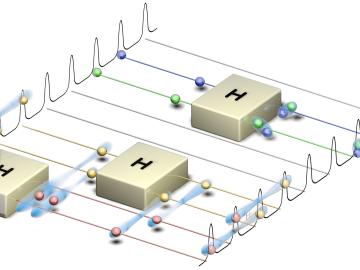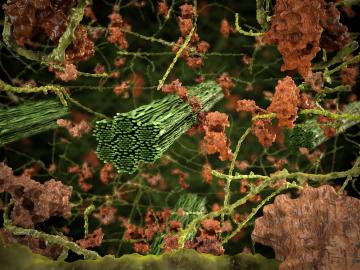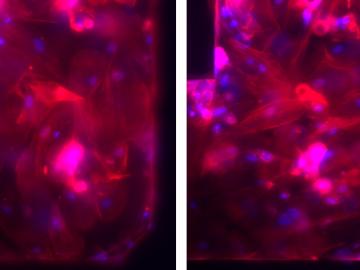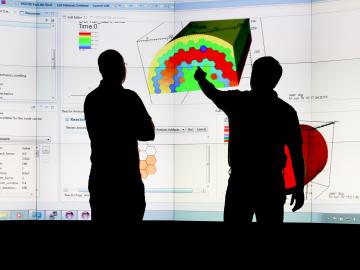Filter News
Area of Research
- (-) Nuclear Science and Technology (20)
- (-) Supercomputing (43)
- Advanced Manufacturing (5)
- Biological Systems (5)
- Biology and Environment (4)
- Biology and Soft Matter (1)
- Building Technologies (4)
- Chemical and Engineering Materials (2)
- Chemistry and Physics at Interfaces (6)
- Clean Energy (89)
- Climate and Environmental Systems (2)
- Computational Biology (1)
- Computational Chemistry (1)
- Energy Frontier Research Centers (8)
- Fossil Energy (1)
- Fuel Cycle Science and Technology (1)
- Functional Materials for Energy (6)
- Fusion Energy (2)
- Geographic Information Science and Technology (2)
- Isotope Development and Production (1)
- Materials (91)
- Materials Synthesis from Atoms to Systems (5)
- Materials Under Extremes (6)
- National Security (2)
- Neutron Data Analysis and Visualization (2)
- Neutron Science (36)
- Nuclear Systems Modeling, Simulation and Validation (1)
- Quantum Condensed Matter (2)
- Reactor Technology (1)
- Sensors and Controls (2)
- Transportation Systems (2)
News Topics
- Advanced Reactors (1)
- Artificial Intelligence (1)
- Biomedical (1)
- Computer Science (6)
- Critical Materials (1)
- Fusion (1)
- Isotopes (2)
- Materials Science (2)
- Molten Salt (3)
- Neutron Science (1)
- Nuclear Energy (6)
- Physics (1)
- Polymers (1)
- Quantum Science (1)
- Space Exploration (1)
- Summit (2)
- Transportation (1)
Media Contacts

The Department of Energy’s Oak Ridge National Laboratory is collaborating with industry on six new projects focused on advancing commercial nuclear energy technologies that offer potential improvements to current nuclear reactors and move new reactor designs closer to deployment.

Scientists from Oak Ridge National Laboratory performed a corrosion test in a neutron radiation field to support the continued development of molten salt reactors.


Seven researchers from the Department of Energy’s Oak Ridge National Laboratory have been chosen by the Innovative and Novel Computational Impact on Theory and Experiment, also known as INCITE, program to lead scientific investigations that require the nation’s mo...



Scientists from the Critical Materials Institute used the Titan supercomputer and Eos computing cluster at ORNL to analyze designer molecules that could increase the yield of rare earth elements found in bastnaesite, an important mineral

In a project leveraging computer vision, machine learning, and sensors, Oak Ridge National Laboratory scientists are working with private company GRIDSMART Technologies, Inc. to demonstrate how stop lights can be programmed to improve fuel economy and reduce emissions.






